What is SEO? To answer this question, first you need to know what it stands for.
SEO as most of you must be already knowing, is the acronym for “Search Engine Optimization”.
And it refers to the process of increasing a site’s visibility and traffic in organic search results.
In simpler terms this means placing your website in a position that attracts the attention of people who are looking for what you are offering.
SEO done right considerably increases the quantity and quality of visitors to your blog.
If you are new to blogging, we have an in-depth guide on how to start a blog which can help you get started.
SEO has become indispensable for any business with an online presence.
This explains why the phrase "what is SEO" is being searched for more than a thousand times every day on the internet.
According to Google, people conduct more than 2.2 million Google searches everyday.
And on Word Press alone there are over 2 million blog posts every day.
That comes down to about 24 blog posts every second.
Not counting all the other hosting platforms and independent websites. You can see why you’ll need to be able to stand out if you’re in the digital space.
Still asking what is SEO?
Well, search engine optimization (SEO) is the only unpaid way to appear in search results in your niche.
And being able to rank at the top of these results makes all the difference in the world.
For example if you blog about how to bake bread.
You can only imagine how many thousands of blogs there are on the same subject.
However, your hope is to be among the top sites Google recommends every time someone searches for ‘’how to bake bread’’. To maintain consistent progress and adapt to algorithm changes, many businesses invest in monthly SEO services that provide continuous optimization, content updates, and performance tracking.
And the only way you can achieve that is through implementing a professional SEO strategy.
What is SEO and Why is SEO Important?
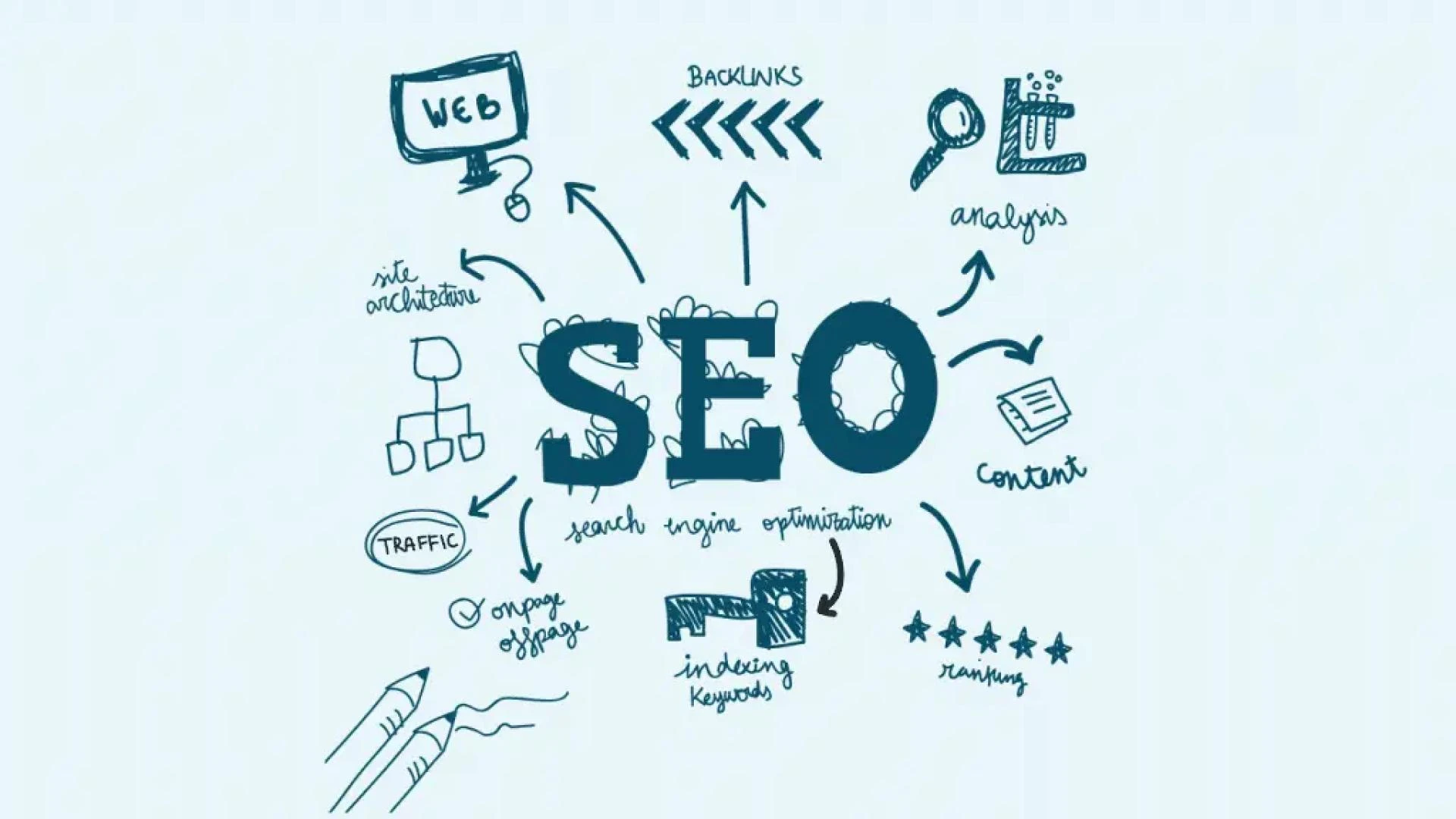
In digital marketing, visibility and rank are everything.
They have a direct impact on your bottom line, which makes SEO a fundamental part of your online presence.
Given that search results are the primary source of traffic for most websites, it is mandatory to outperform your competitors in search engine results as well as ranking.
Research shows that the first five results on Google get up to 67% of all clicks.
So, if you’re not at the very least on the first page, you might as well quit digital marketing.
Long gone are the days when all you needed to get noticed was to put out good content.
Today it is an almost impossible feat to come out on top with so much information available.
It’s true, valuable content will always be the surest way to distinguish yourself from the crowd.
But it takes more than that to gain a spot in the much coveted first page especially when you’re starting out and still figuring out what is SEO.
You’ll need to combine valuable content with optimized keywords, headlines, backlinks, and a few other strategies to stand a chance and that’s why SEO basics are important.
It is worthy of mention that 75% of all online searches are carried out through Google.
And Google\'s algorithm ranks content by taking into account certain milestones, most of which no one is truly sure of.
Except for SEO.
There’s simply no way around SEO, and if you don’t get to the top of Google searches no one will read your content no matter how mind blowing it is.
That is why businesses are spending a whole lot of money trying to master SEO techniques and tools that help understand search engines.
Important Terminologies At a Glance
Getting into SEO for beginners requires you to first and foremost master the SEO basics.
And this includes terminologies used in this line of business.
Here’s a list of some of the most common terms you’re likely to come across on your SEO journey:
- Backlinks:
Ask most people what is SEO and they’ll say backlinks. A backlink is when a web page is referenced in another website, for example when an article links to content on another page. It could be through a citation or quote.
- Internal Links
An internal link is a hyperlink that leads to an image or document within the same website.
- PageRank
This is an algorithm used by Google to rank websites in search results. PageRank measures the authority and importance of a page by counting quality links.
- White Hat
In SEO, white hat refers to tactics used to rank a website that are in accordance with industry best practices. For example the use of keywords, Meta tags, quality content, etc.
- Black Hat
Black hat SEO on the other hand refers to unethical tactics that violate search engines rules and regulations.
- On-page SEO
On-page SEO refers to all the things you do within your website to increase its visibility and rank in searches.
- Off page SEO
This one entails all that is done outside of your website to improve its rank on Google search engines. For instance backlinks.
- SERP
It stands for ‘’search engine results pages’’ and they are the pages that show up when users search for something on Google.
- Bounce rate
When someone is directed to your page and they leave instantly, Google considers it a bounce. It translates as not delivering what was promised and the more of this you have the lesser you’ll rank on search engines.
- Click-through rate (CTR)
This refers to the number of people clicking on your content when they come across it. CTR is important in SEO because it determines whether you maintain your rank, move up or down.
- RankBrain
RankBrain is the algorithm Google uses to generate search results every time a user asks for something.
How Do Search Engines Work?
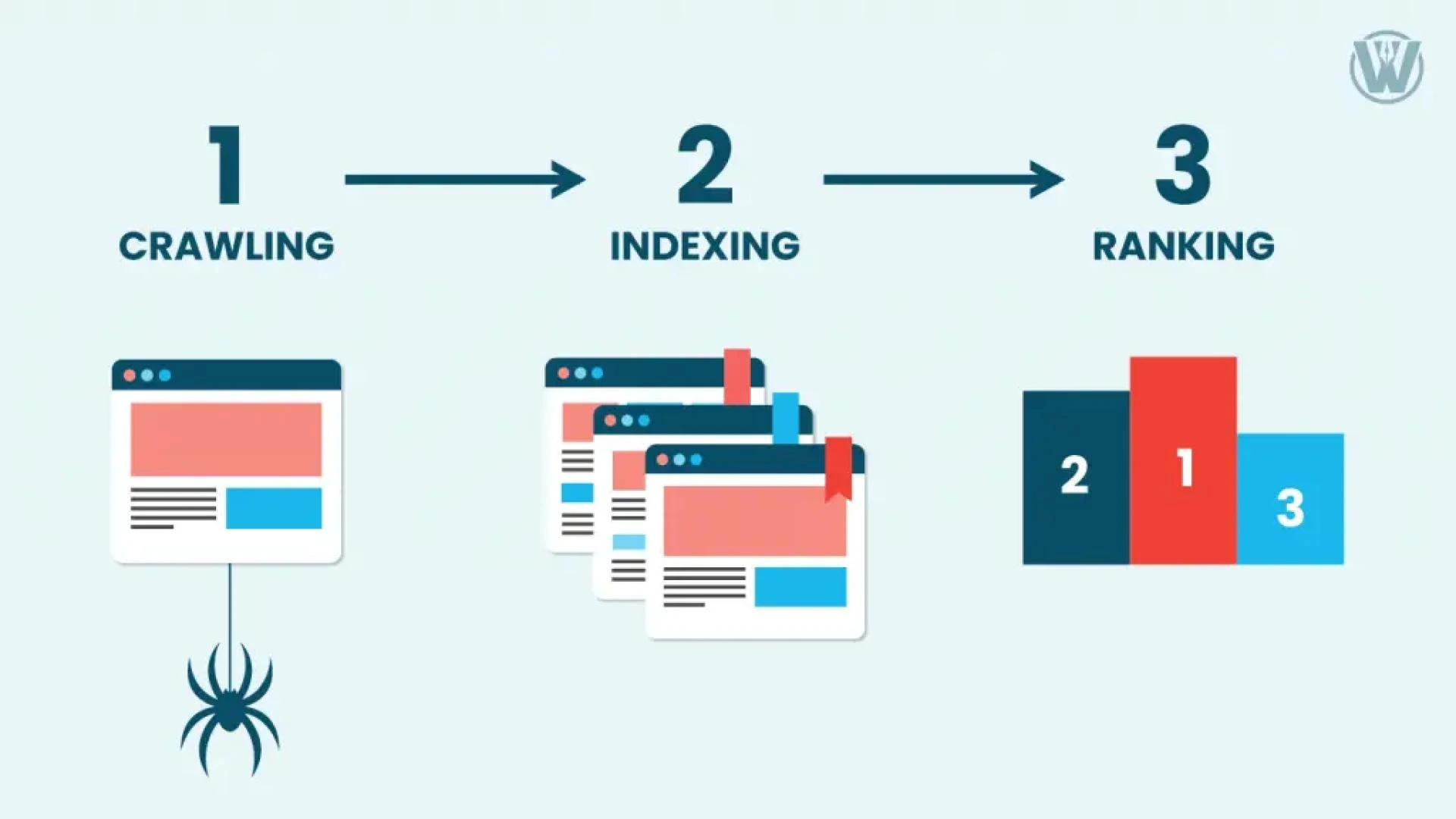
Search engines exist for the sole purpose of finding the best possible answer to questions asked and delivering the response as quickly as possible.
Search engines scour the web for the most relevant response to your question and bring it to you.
Let’s take a closer look at how they go about it and the three ways in which they function.
1. Crawling
This consists of a team of search engine robots scouring the web for relevant content by examining each page’s URL.
Crawlers or spiders as they’re often called, casts its net on various content on the internet, be it images, articles, videos, PDF, and other formats to find links with the information the user is searching for.
After going through your content and pages, crawlers index your web page in a database where it could be easily retrieved when anyone is seeking.
For a website to show up in search engines it must have been previously crawled and indexed and for this to happen your website must contain pieces of code embedded into your site\'s important pages.
Note that optimizing unimportant pages and irrelevant content for SERPs is counterproductive because when Googlebots do not find what they are looking for your site is labeled irrelevant and might never be found.
To make sure your page is being crawled by Google bots you should check if your website has been indexed or not.
This information can be gotten by typing "site: yourdomain.com’’ in the Google search bar.
If you’re unsatisfied with the way Google is crawling your website you can improve it by blocking the robot from crawling less important pages on your website such as the Login or payment pages so they can focus on only the pages that matter without wasting time.
2. Indexing
As earlier mentioned, indexing is storing and organizing the content found by crawlers.
Once your website has been discovered by crawlers, the next action is to store or index it.
When a page is indexed it means the information on it has been analyzed, understood and categorized.
This is what every content creator out there wants for their page.
It should also be noted that a page can be removed from index, if at some point crawlers find out that the information on that page is irrelevant, outdated or in violation of Google’s Webmaster Guidelines it will surely be removed from index.
This is why you sometimes get an error code ‘’404’’ or a ‘’not found’’ when searching for a page on Google.
To get your site to be indexed by Google you can add Meta tags to your content and URL to make it more visible.
If your page was previously on Google index but has been removed, you can use a tool called ‘’Fetch’’ to find out your pages status and submit your URL for indexing.
Some pages especially those that want to remain private can deliberately block crawlers from finding and indexing them.
Such pages can often be accessed only with a password and the content is often not for public consumption.
Tell search engines how to index your site
Meta tags are codes that instruct search engine robots and give them hints on how to index a website.
They are the best way to make sure your site is found and indexed as it should. Crawlers understand these codes and act accordingly.
When you add ‘’index’’ or “noindex" to the HTML of your webpage, search engine robots get the message and comply.
By default, every page on the web is considered for indexing unless stated otherwise.
You can also choose to index some pages on your website and leave out others, for instance you can leave out pages that contain your visitors personal information if you have an online store.
3. Ranking
The little magic that happens every time you type a query into the Google search bar and results appear is known as ranking.
After crawling and indexing a website, it is stored by relevance and the more Google deems your content relevant the higher in rank it appears.
In the ranking process, the search engine uses algorithms to determine which website is most relevant to your query.
These algorithms are improved on and changed frequently to better the quality of search results and to stop anyone from really figuring them out.
For example Google adjusts and makes changes on their algorithm on a daily basis making it impossible for anyone to keep up.
This is why if you own or run a website, you must always have your ears to the ground when it comes to changes in the Google algorithm.
A minor tweak or update can greatly affect the rank of your website.
Bear in mind that this line of work is a constant uphill battle that is ever changing, and to survive you need to always compare your content and website against Google’s Quality Guidelines.
This is as close to understanding the Google algorithm as anyone can get.
What is Keyword Research

What is SEO without keyword research?
SEO is primarily about finding what people are looking for and delivering it to them through optimization with the use of ‘’keywords’’.
Simply put, keyword research is all about going through specific market data to understand what your customers are looking for and how you can best deliver it to them.
Keyword research tells you what people are searching for, the number of people searching for it and in what ways they go about their search.
Being able to answer these questions about your target market is a game changer for any marketing campaign.
How to find keywords
Chances are you most likely have words off the top of your head that relate to your business, niche, product/service and overall activity.
Those are your starting point when searching for keywords, these are known as seed words, it’s from them you expand your search.
For example if you own a restaurant specialized in vegan pizza, your seed keywords are likely to be ‘’pizza’’ and ‘’vegan’’.
From them you will be able to generate related keywords both popular and not so popular keywords as well as the most frequently asked questions in relation to your keywords on Google and alternative search engines like Yahoo and Bing.
When carrying out keyword research, there are a few main aspects to consider: keyword search volume, competition/difficulty, and relevance.
1. Keyword Search Volume
When searching for keywords one of the major factors you want to take into consideration is how many people are actually searching for the keyword.
The higher the number of searches for a given keyword, the broader your target audience will be.
Most keyword research tools will show you the number of searches the keyword has generated during the last month and every month over the past year.
Keywords often vary greatly when it comes to volume, some keywords rank highly while others are on the lower side.
However, the higher a keyword ranks the more competitive it will be to rank on it, that’s what is referred to as keyword difficulty.
Though you’ll be tempted to go for words with the highest volume since they are the most searched, you don’t stand a chance as a beginner.
That’s why we recommend you go for the keywords with medium to low volume this way you can carve a spot for yourself easily.
2. Relevance
This all about words that will take your content to the exact audience you are targeting.
For instance if you have a pet shop that sells dog products to pet owners there’s no point in putting your page in front of cat owners even though they are pet owners.
Relevance is all about being exact and specific with your chosen words, so a keyword such as ‘’pet owner’’ could rank high in volume but it\'s not specific enough for you to use.
Still with regards to relevance a keyword could be relevant to your page and rank high on search engines but still won’t generate the results you want.
Sometimes, keywords with the highest search results can be misleading.
For instance not everyone who types in the word ‘’iPhone’’ on Google is looking to buy one.
If you’re selling iPhones and decide to target that as a keyword you could very well end up making no sale at all because the word is too broad.
This is where ‘’long tail’’ keywords come into play.
Long Tail keywords are more like phrases that help narrow your audience, for example instead of going for ‘’iPhone’’ as a keyword you\'re better off with ‘’ iPhone x cost’’.
It is more likely that someone searching for the cost of an iPhone is looking to make a purchase than a person searching for the much broader ‘’iPhone’’.
So, in a nutshell phrases tend to yield better results than exact keywords.
Know that punctuation can also change the perception of a keyword and how it interacts with related words.
3. Competition
This refers to the estimated number of people in your niche who are using the same keyword in both organic and paid search.
As you might have already guessed a keyword becomes more difficult to compete for when big brands and already established pages in your industry are using it.
That’s why we recommend striking a balance between keyword volume and SEO difficulty because this will determine your ability to rank.
It will also determine the cost of CPC which is important if you intend to use paid traffic.
In addition, keywords can be sorted out by region, this means you can strategically target an audience by location.
This is very helpful when you have a local business, you can easily narrow your search within a specific country, city, state or local area.
The Google Trends tool for instance allows you to narrow your search to sub regions.
You can search keywords by seasons too.
There might be a spike in certain keywords during the holidays or during the summer months.
Best Keywords Research and Analysis Tools
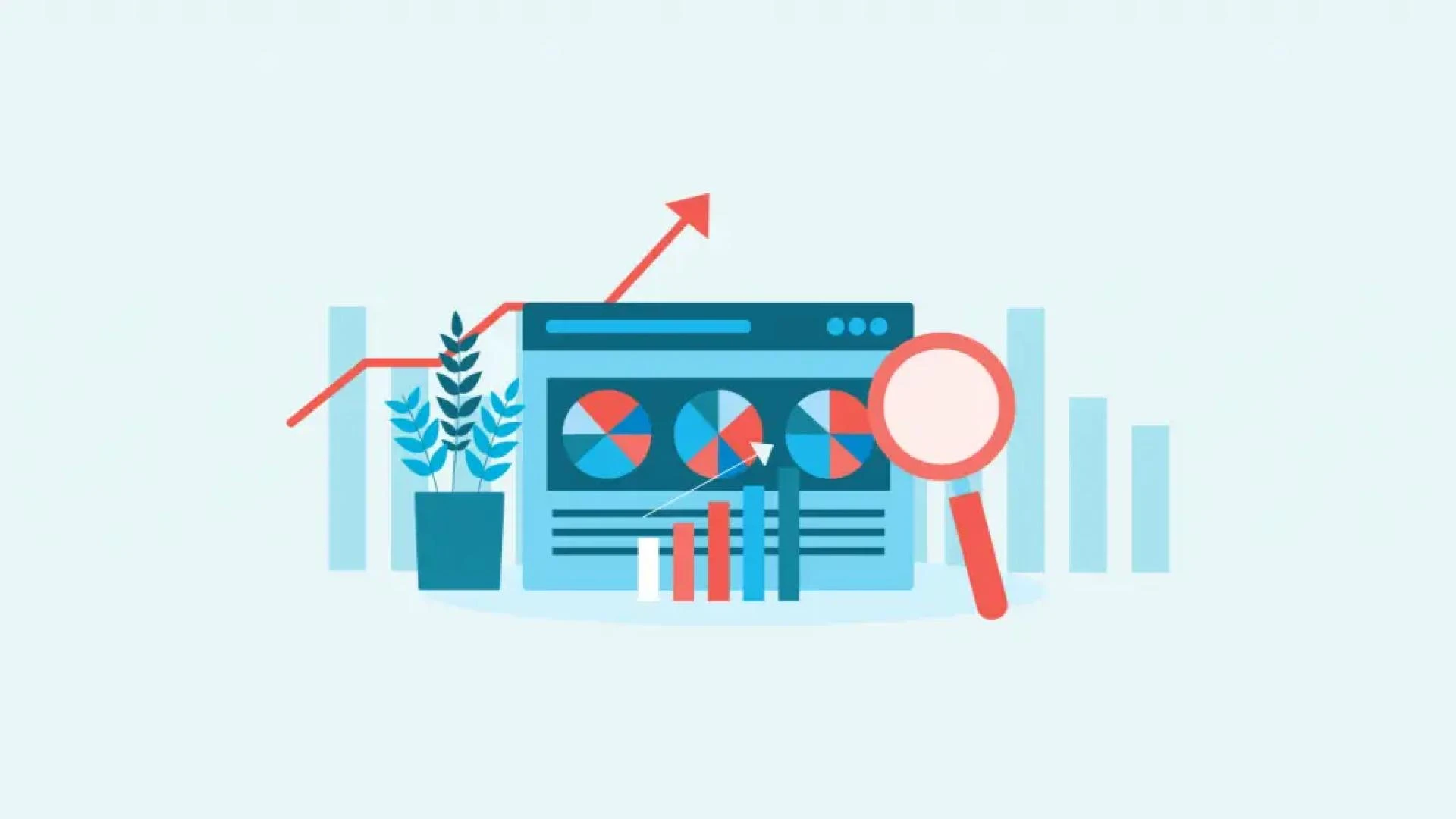
There are tons of keyword research tools on the internet both free and paid you can use to find the right keyword to optimize your content and website.
These are some of the best we’ve put together to make it easier for you.
Moz Keyword Explorer - This keyword tool gives you information on search volume, SERP, ranking, and all the data you need to make up your mind concerning a specific keyword.
The Moz Keyword Explorer provides every keywords difficulty score, local geo-specific information as well as broader data.
Google Keyword Planner - Considered the most used keyword research tool, Google\'s Ad Words Keyword Planner is always the starting point for most people interested in SEO basics.
Though this keyword planner groups keywords of the same volume bracket which is quite annoying, the tool still stands out among its peers.
Google Trends - As its name suggests Google Trends is amazing at finding trends and keyword fluctuations.
You can easily see what people are searching for right before summer or Christmas.
Ubersuggest - When you type your seed words into this tool it expands your ideas and suggests a large pool of keywords based on the following variables: Related words, suggestions, questions, prepositions, and comparisons.
With Ubersuggest you are spoiled for choice.
AnswerThePublic - This is a free tool that you can use at any time to find competitive keyword suggestions. It also provides commonly asked questions around keywords.
What is on page SEO and what are the best practices?

On-page SEO is all the little and not so little tweaks you add to your website to optimize it and make it stand out for crawlers to pick up.
They include the Meta tags, titles, headers, images, links, and keywords you incorporate into your pages.
On-page SEO has many layers to it, but the idea behind it is that Google ranks pages high because it considers them to have the best answers to users\' questions.
To be considered an authority in your niche, find the pages that rank top on Google’s search engine, put out better content than them, use the best keywords, and pay special attention to on-page and off-page SEO.
These is are some on-page SEO best practices you might want to look at:
1. Header tags
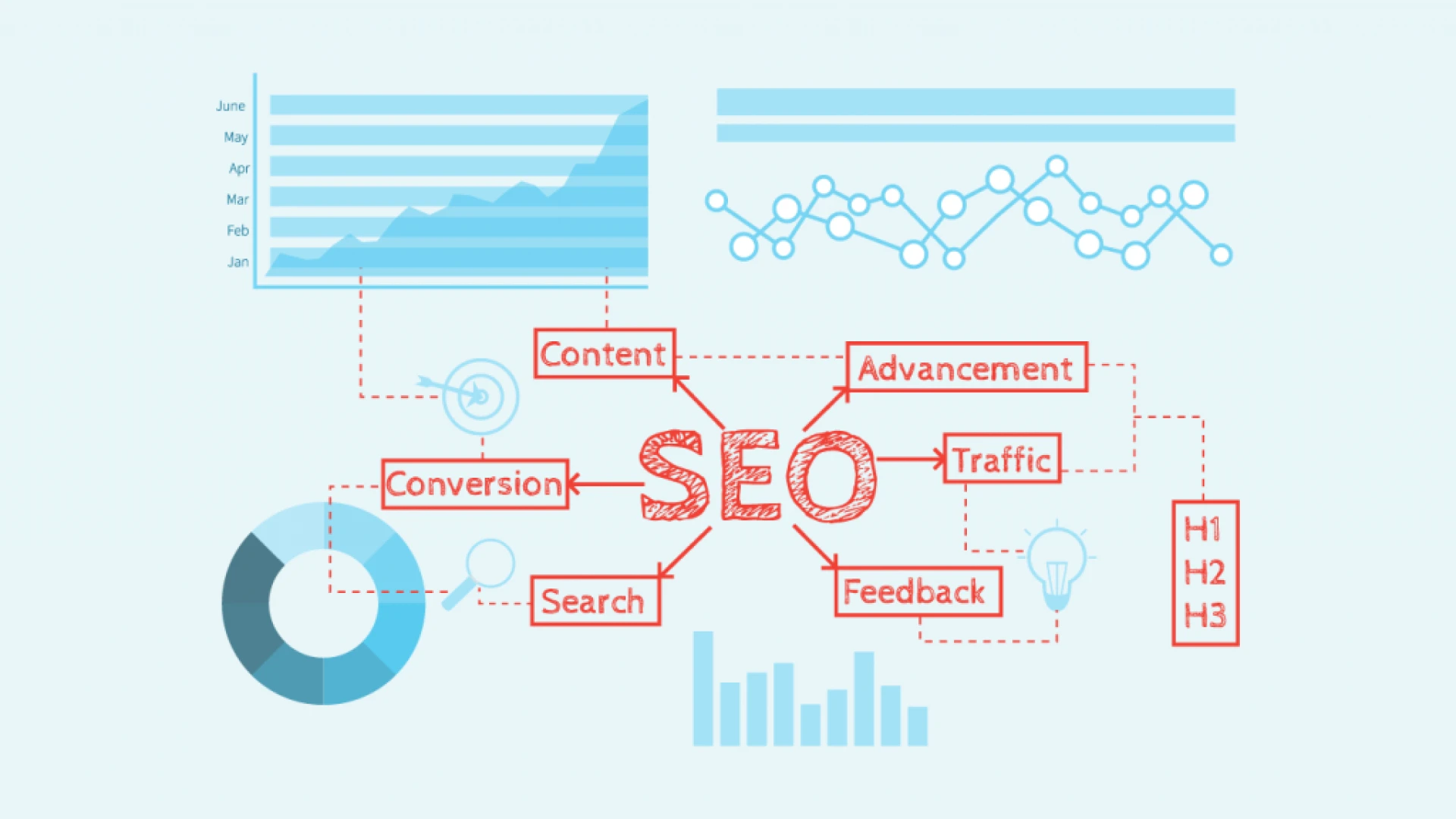
Header tags are HTML codes used to describe titles and headings on a web page.
They typically go from H1 to H6 referring to the title, sub-title, headings, and so on in descending order of importance.
This is how it looks in HTML:
<h1>Page Title</h1><h2>Subheading</h2>
These tags are descriptive in themselves because every time the algorithm comes across an <h1> tag it knows that\'s the title of your page and the same goes for all the other tags.
Though they go all the way up to H6 it’s not recommended to use all of them in a single article or page.
Usually H1 would state your topic, say what you intend to talk about, H2 will break it down further and subsequently H3, H4 will get into more details.
H1 has to contain your primary keyword and describe what the page is all about, it goes like this:
<h1><title>Your Title</title></h1> or<h1>How to Make Money Online Guide</h1><h2>Make Money with No Initial Investment</h2><h3>Affiliate Marketing</h3><h4>YouTube Channel</h4>
Your title has to leave no doubt as to what you’ll be discussing down the line and each subheading has to elaborate even further, this is how it gets picked up by crawlers and how it will appear in search results.
However, you should also have your website visitors in mind when crafting your headings, they shouldn’t be for the sole purpose of search engine crawlers, because at the end of the day visitors are what really matters.
2. Image optimization

If you haven’t figured it out yet, images are a huge part of a page’s success, not just for aesthetics but also because they can either work for you or against you depending on how you handle them.
Images can considerably slow down your page so to begin you have to try as much as you can to compress your images to increase page speed without losing their quality. Tools like ImageOptim or Optimizilla can help you achieve that.
There’s also the possibility to use alternative image formats instead of the usual JPEG. You could use a GIF, PNG, PNG-24 or PNG-8 depending on the image.
The next step is SEO optimizing your images with descriptions, and Meta tags.
Submitting an image sitemap is another highly effective way to optimize your images, it makes it easier for Google to crawl and index your images.
This way you are sure no image is left out, each and every one of your images is indexed on Google.
3. Meta descriptions
Similar to tags, Meta descriptions are HTML codes that describe the contents of the page they are found on.
They could be found in all kinds of content, articles, images, videos, etc. A Meta description will look like this:
<head> <Meta name=”description” content=”Description of page here.”/></head>
Meta descriptions affect the way your page appears on search engines as well as your page’s click-through rate though it cannot single handedly affect ranking.
For Meta descriptions to actually make a difference they need to have the following qualities:
Relevance: Use Meta descriptions that are highly relevant to your content, your description should be explicit enough to tell the reader they’re on the right page but elusive enough to make them want to click on your page.
Length: The ideal length of a Meta description should be anywhere between 150–300 characters. Google search engine is often very generous with the space it allocates to Meta descriptions especially when it is a high ranking website.
4. Internal links
There’s a direct correlation between link building and the crawlability of a website.
Both internal and external linking are highly important when it comes to a page’s perceived authority and rank.
Internal linking which is connecting your content to other pages on your website makes it easier for crawlers to find your pages.
Internal links are a great way to build link equity which in turn improves ranking power.
This is why there’s all the hype around backlinks, link building, and referencing on the internet.
5. Anchor text
An anchor text is a content whose purpose is to link to other pages, an anchor text sends signals to search engines letting them know the content they’re searching for is on this or that page.
The anchor text usually contains a hyperlink which redirects search engines to a destination page.
For example if a link in an anchor text says ‘’ what is SEO’’ the search engine automatically knows where the hyperlink leads to and what is on the other side without having to go through that page.
However, there should be a natural flow with anchor texts, they should not be stuffed with links simply for the sake of SEO.
Anchor texts need to say something valuable with links serving as extras.
6. Formatting and structure
In as much as putting out valuable content is important, readability is vital for your page to stand a chance and readability is all about formatting.
Using the wrong format kills your page faster than you can say SEO.
No one will take a second look at a page that is not appealing to the eyes.
So, to improve your chances at readability pay attention to the following:
Fonts and Text size - Tiny fonts are never going to work in your favor, so you’re better off avoiding them like the plague.
Google recommends anywhere from a 16-point font, in fact forget any font below 16 even exists.
Use bold and italics to emphasize on points you want to draw attention to without exaggeration of course.
Headings - They help readers navigate your page with ease, not having to go through everything if they’re looking for something specific.
Headings break up your pages into sections making a smoother transition from one part to the other.
Bullet points - Ideal for skimming through page content, bullet points are eye catching and helpful.
Incorporating bullet points and lists is a great way to increase readability without much effort.
Paragraphs - Long blocks of text can be quite intimidating, they discourage readers and increase page abandonment, and you should avoid them to increase audience retention.
Supporting media - Plain content has a way of falling flat, to avoid this add images, videos, widgets, and other visuals to support your content.
But make sure they are compressed, relevant and tie in with your content.
7. URL Format
URLs are sensitive and they play an important role in displaying information that is unique to your page.
URL stands for Uniform Resource Locator and the way it is structured greatly affects a page’s click-through rate.
SERPs often display URLs alongside other important information like title tags and page descriptions.
A winning URL has to be clearly structured, specific, and of medium length.
Research shows that the longer a URL is the less likely people are to click on it.
Make it a point to keep each of your pages URL clear, concise but descriptive.
For instance URL a) will always deliver better than URL b).
- example.com/snacks/butter-cookies
b) example.com/snacks/desserts/butter-cookies/home-made/hand-made/
Long URLs are likely to be cut short during search engine display.
This might affect their meaning or simply lead to confusion. Word separators such as underscores (_), spaces ( ), signs (+) and symbols ($) should be avoided in your URL.
Since there’s no guarantee search engines will be able to understand or interpret them.
If you must separate words in a URL, stick to hyphens (-).
Punctuations should also be avoided at all cost.
Keep it simple.
There’s no point in mixing upper and lowercase letters in your URL or using caps, all that will result in confusing the algorithm.
8. HTTP and HTTPS Protocols
The “http” or “https\' \' that you always see before a domain name is known as a protocol. It identifies whether a website is secure or not.
When “s” appears at the end of “https\'\' it means the website has passed security protocols, the’s’’ stands for secure.
In fact for a page to gain that’s’ it must have an SSL certificate.
This certificate shows that a page can encrypt data. On Google Chrome, sites without the Secure Sockets Layer (SSL) Certificate are labeled as untrustworthy, which discourages most visitors.
Importance of internal linking and Best Practices
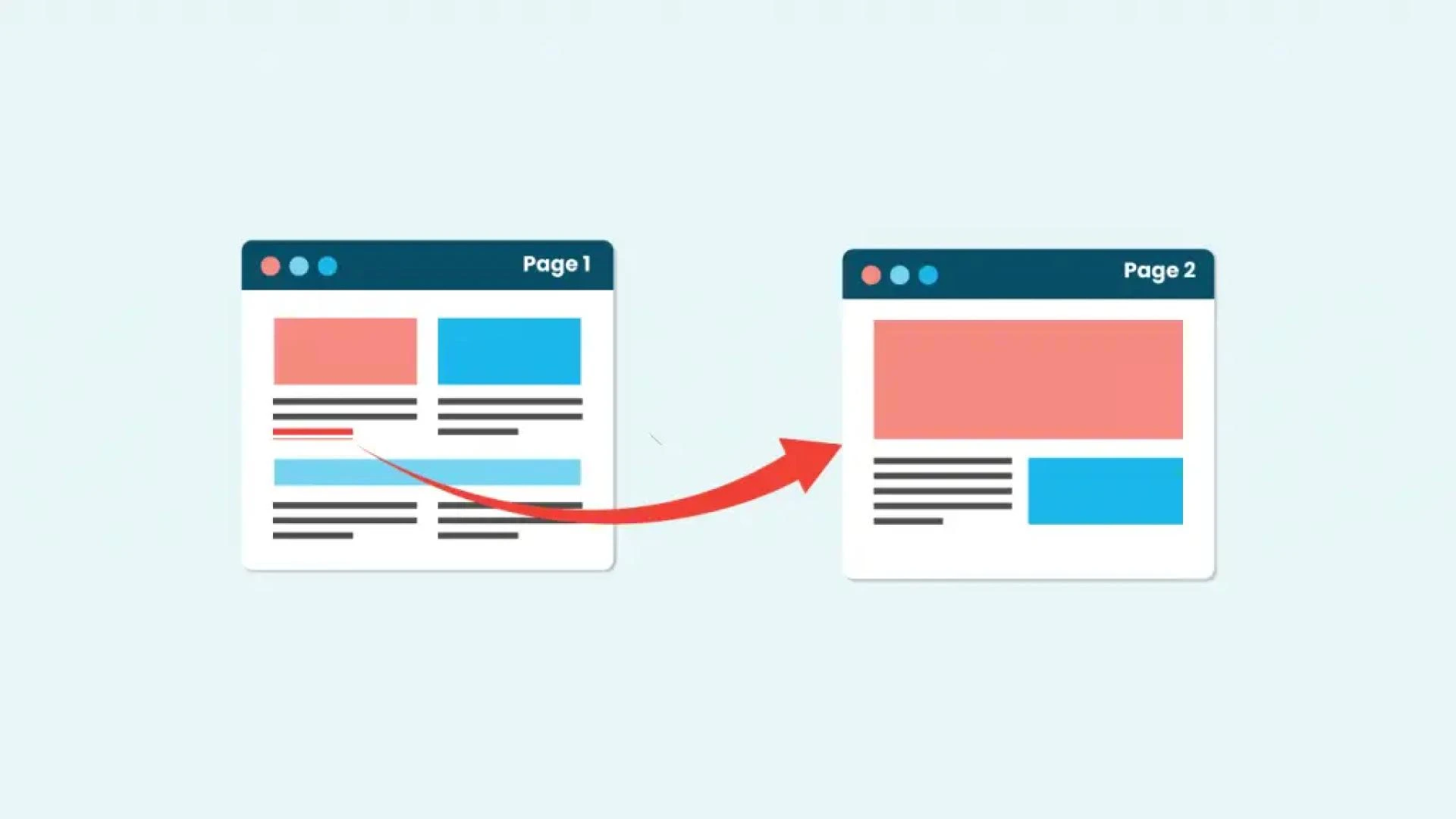
Internal links are hyperlinks that lead to other pages on your website, the Google algorithm relies greatly on links when driving search traffic.
In fact no matter how on point your on-page SEO is, if your website does not have both internal and external links you will not appear on search results.
Internal linking a specific page of your website on other pages draws Google’s attention to that page and signals the page is important.
That said, you should not stuff your pages with links, they have to seem natural and flow with your content.
One of the major benefits of internal links is that they help users easily navigate your pages.
Linking your pages to one another provides a smooth user experience on your websites as users can go straight to the information they’re interested in without any hassle.
Moreover, internal linking improves ranking power by spreading link equity, the Google algorithm uses a concept called E-A-T to evaluate website links.
E-A-T is an acronym for expert, authoritative, and trustworthy which simply means the more quality links a website has the more reliable it is in Google’s eyes.
Internal linking Best Practices
The yardstick for measuring the best website SEO has to be Google’s expert, authoritative, and trustworthy attributes, that’s the surest way to know your website meets all requirements.
As to what is considered expert, authoritative, and trustworthy, let’s look at some of the internal linking best practices.
For Internal links to improve ranking power, they have to be structured in a manner that respects link hierarchy.
This means the links you use have to flow throughout the entire site according to the level of importance of the information it points to.
This is the strategy used by high-performing websites like Amazon.com.
Another aspect to consider is to make your links visible to crawlers, more often than not websites are guilty of burying their links in ways that elude search engine crawlers.
Don’t make that mistake, the best way to avoid this is to add tags to the URL of your links indicating where it begins and ends.
The appropriate tag for this is often "a" in HTML jargon. For example a typical hyperlink appears like this:
http://www.example.com/desserts
When you insert the ‘a’ tag it becomes:
<a href = http://www.example.com/desserts</a>
With this the algorithm knows which part constitutes your hyperlink and which is your anchor text.
This structuring leaves no room for confusion as it is in a language search engines understand perfectly making it very easy for them to index straight away.
What is off page SEO?
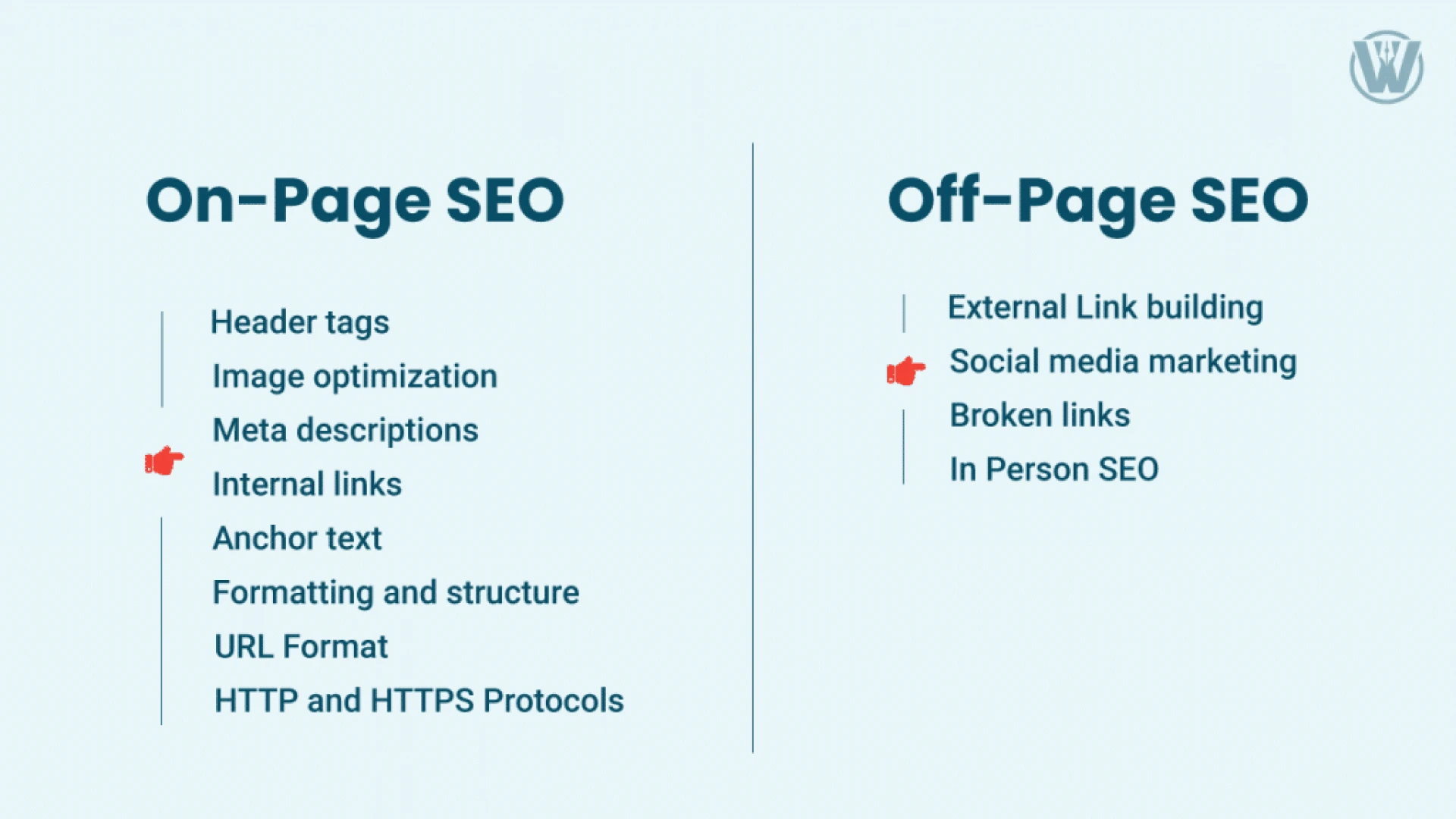
Off-page SEO refers to everything you do outside of your website to promote it and improve your search engine rankings.
Off-page SEO is all about your website even though it takes place away from it. The purpose of Off-page SEO is to enhance your websites popularity, authority, trustworthiness and relevance.
Backlinks are the most common form of Off-page SEO though not the only one.
Backlinks consist of having your website referenced or quoted in much more reputable websites, it could be through a guest post you write on another site, a comment you leave in a forum or simply a link leading to one of your pages.
While On-page SEO takes place within your website, Off-page SEO takes place outside of your website.
SERPs look at Off-page SEO as someone else vouching for you or endorsing you which automatically makes you more popular and cooler.
If you’re getting high school vibes you’re not wrong, Off-page SEO is nothing if not a popularity contest.
It’s about who knows you, who you know and who is talking about you.
If you get backlinks from a page like Forbes or the Huffington Post imagine what it will do for your website.
Why Off page SEO Matters?
Apart from creating brand awareness and exposure, Off-page SEO is the ultimate traffic magnet.
When you build that awesome site with fabulous content all you need now is to get people to your site.
That’s the reason you’re trying to rank it in the first place.
The truth is no matter how amazing your website is and how on point your content, structure and overall on-page SEO is, if you do not take any Off-page SEO action your website is doomed.
YES! That’s how important Off-page SEO is.
And it’s why when you ask what is SEO, most people say it’s about building backlinks.
Off-page SEO attracts Google’s attention to your page and that attention carries more weight when it is coming from someone else.
When you get quality links from reputable sites pointing to your page, SERPs awards you the highly coveted badge of relevance, trustworthiness, and authority.
While the metrics for ranking a website constantly changes, the use of quality backlinks always has its place.
It is one of the few things everyone in the SEO community can rely on to be constant.
As a brand, when you get reviews from other sites for example, it has the power to make or break your business.
It carries more weight than anything you could ever do on your website.
So, in a sense Off-page SEO can single handedly take your website to a whole new level or if done wrong can burn it to the ground.
That said, what can you do to up your game with Off-page SEO?
Here are some of the actions you should be taking:
External Link building
For search engines, links determine the value of a website, the greater the quality of links to a website the more valuable its content is considered.
It’s this concept that brought about unethical practices like Black hat SEO which we’ll talk about later.
External links commonly called backlinks are at the very core of Off-page SEO, the Holy Grail for every content marketer is building high value backlinks across the web.
External links exist in three different types categorized by how they are earned, they are natural links, manually built links, or self-created links.
Natural links are obtained without any input on your part, you might not even be aware they exist.
A good example is when your product/service is recommended as a solution to someone’s problem.
Let’s say you sell software and a blogger who sells laptops recommends your software to their audience through a link on their blog, that’s a natural link.
Manually built links on their part are links you acquire through networking and link building campaigns.
Simply put these are the links you work for, it could be by reaching out to other content creators in your niche, guest posting on other websites, paid advertising, social media, etc.
Manually built links are intentional and an integral part of a marketing strategy.
Self-created links entail adding your link to online directories such as classifieds, forums, blogs, and press releases and so on.
For example if you answer a question on Quora or Reddit leaving a link to your website.
Also feel free to submit your content to WriteUpCafe Community, which has more than 100,000 registered members.
Self-created links often lean towards black hat SEO which makes them quite controversial in the eyes of search engines.
Plus getting noticed for unnatural links could land you a Google penalty.
That’s why when you’re embarking on a link building journey you should consider the following:
- How related the linking website is to your content
- The popularity of the linking website
- The authority and trustworthiness of the linking site
- How many other links the linking site has
- The quality of the anchor text featuring your links
Social media marketing
When it comes to ranking, social media does not really move the needle as would backlinks, however, it offers a unique advantage of engaging with your audience which in itself is a good thing for brand awareness and engagement.
Being present and active on social media is good SEO because it fosters visibility, and increases potential customer’s affinity for your brand.
You can do promotions, start conversations, get opinions, and answer questions through social media though it will not increase page rank.
Broken links
An SEO tactic most people overlook is building broken links, this in itself makes it a gold mine since there won’t be too much competition.
Broken link building is when you find websites in your niche with outdated links, hyperlinks that lead to 404 error pages, links to sites with expired hosting and reach out to them signaling the broken link and asking them to replace them with your links.
This strategy is quite simple, first of all the owner of the website will be thankful to you for drawing their attention to the dead link.
Secondly, they’ll be more inclined to return the favor by replacing the dead links with your link, it’s a win-win.
In Person SEO
This is when you show up in person to promote your website, it could be at events, networking occasions and any place where word-of-mouth can attract attention to your business.
This is ideal for local businesses because you can meet your clients as well as interact with potential customers one-on-one.
You can easily get satisfied customers to leave online reviews that will work in your favor with the Google algorithm.
Off-page SEO is an unbeatable way to optimize your website because it can easily be personalized to suit your brand and when merged with on-page SEO the results could be phenomenal.
Importance of Link Building and Content Marketing
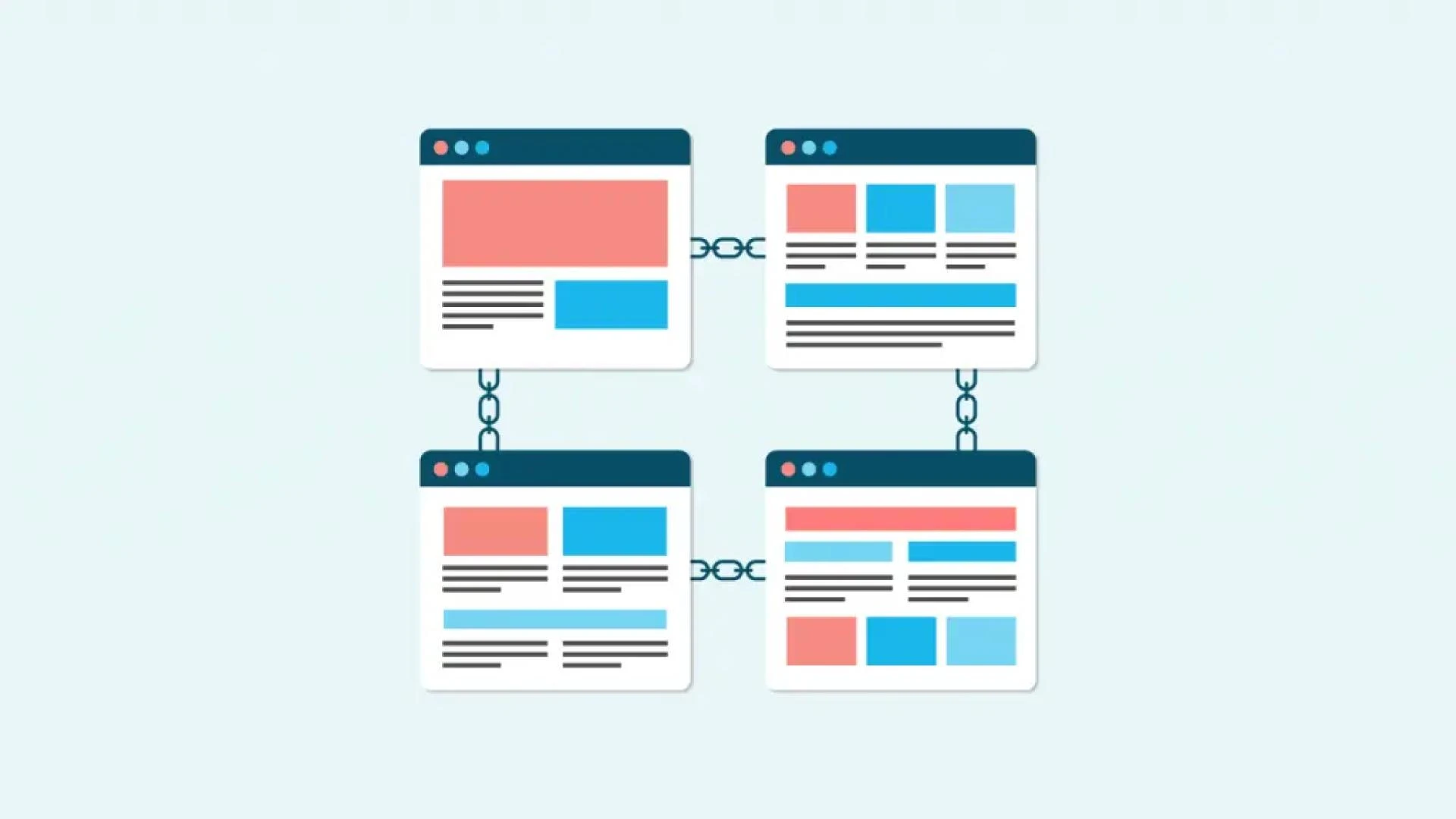
Whether you are a beginner trying to grasp SEO basics or a seasoned expert you’re most likely aware by now how vital high-quality link building is to online content.
Not just because it works wonders for your brand’s outreach but also because it helps with SERPs and ranking.
Link building is the one activity you want to deliberately set time aside for if you intent to succeed online. Here’s why:
When search engine crawlers navigate a website, they look for content they can index and rank.
They try to figure out if the website has enough quality to be added to their indexes, if it does they look at the number of external links leading to the website in question, the relevant keywords and compare it against websites in the same niche.
Based on the results the website is ranked on Google search engine.
The number and quality of external links is one of the deciding factors.
This has been Google’s ranking process since the 1990 despite all the constant updates it looks like it\'s changing anytime soon.
Link building is of great importance because the more quality links you have across the internet, the easier it is for crawlers to spot your content, index and rank your website.
Pages with multiple links get discovered faster than pages with none.
Google always takes into consideration the number of links pointing to a website from external sources when deciding on a site’s authority and relevance.
Google uses a ranking algorithm called PageRank to measure a website’s backlinks which it sees as a vote of confidence from your peers.
Over the last two decades link building has evolved to become so huge that Google had to regulate the activity.
Tactics that used to be allowed are not flagged as unethical and rules are tighter, Google also updated its algorithm every day to stop people from manipulating the search engine results.
Though no one can really tell all the factors Google takes into account when ranking a website, it has been unanimously accepted in the SEO that link builder is one of the corner stones of Google’s deciding metric.
Which makes it one of the most important actions in SEO.
Depending on your line of business the manner in which you approach SEO can differ considerably from one industry to the next.
For instance a content marketer like a blogger might have a completely different link building tactic from a software company or a fashion brand.
The niche in which you are as well as your campaign objectives greatly affect how you go about link building.
Link building as a blogger
What is SEO to a blogger?
Generally known to hate link building bloggers can’t unfortunately avoid it.
If you are in content marketing it’s simply something you can’t run away from.
For bloggers and most content creators link building involves networking with others in the industry in order to get guest posts opportunities, features, recommendations, and anything in between that can help build quality backlinks to their website.
It also requires you to be active in bloggers forums and platforms, in short it is not an easy feat.
Most bloggers say it feels like they spend more time reaching out to websites than actually creating content for their blog.
Not mentioning you have to cater to your website internal links as well.
If you are a blogger it will help to know more about how to increase blog traffic apart from just SEO.
Link building as a company
As a company involved in content marketing your website is probably what you use to generate leads, get feedback and interact with your customers.
So, as much as you’d love to rank high on search engines to drive more traffic, you’d also want to create brand awareness through link building.
And the best way to go about link building is to covet websites that are authoritative in your niche.
Random and small websites no one talks about will do you no good at this point.
As a company you have to build trust in your brand.
For example if your business is a restaurant, a glowing review from a known chef or a food influencer will go a long way.
This is how you get high-quality natural backlinks.
Black Hat vs. White Hat
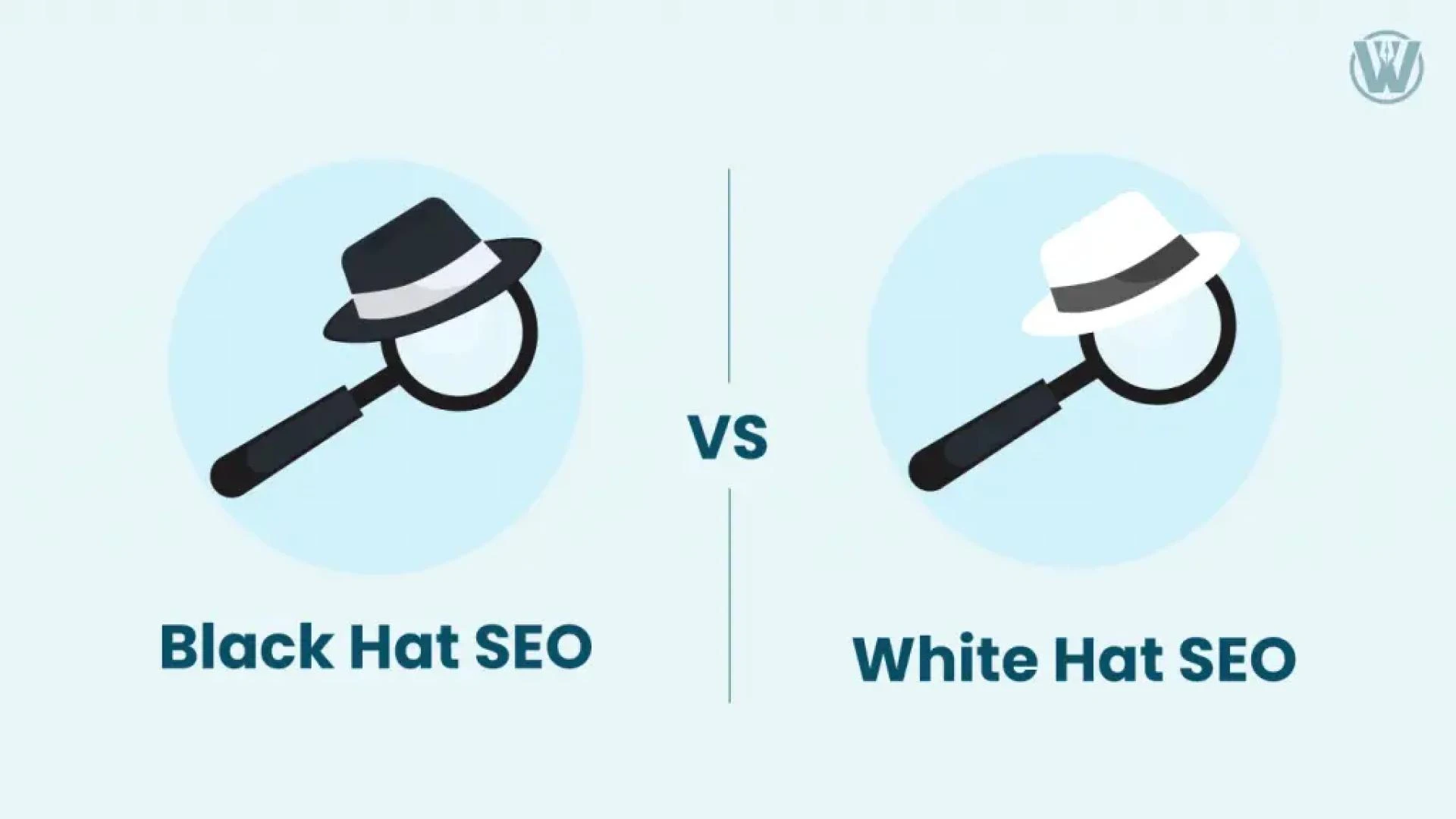
The terms Black Hat and White Hat are derived from popular 1920s Western movies where heroes and villains used to be identified by the color of their hats.
As you might have already guessed heroes wore white hats while villains wore black hats.
Since then, the term has been used severally to mean good and bad, ethical and unethical.
The SEO industry adopted the name to differentiate between SEO practices that are allowed and those that are frowned upon, they coined it:
- White hat SEO.
- Black hat SEO.
White Hat SEO
White hat SEO simply refers to practices that are in line with the rules and guidelines of the SEO community.
Certain practices are considered ethical while others are not, those that are within the rules of ethics are what is called white hat SEO.
For example following Google’s Webmaster Guidelines is white hat given that Google is the ultimate SEO regulating body.
As per Google here’s what is considered ‘’ethical’’ or white hat.
First of all, White Hat SEO has to be centered on your audience, meaning instead of doing SEO to please search engines, your top priority should be to satisfy your audience and provide them value.
Instead of focusing on actions that will boost your page, pay attention to the things that will provide users the best possible experience on Google.
Though this is easier said than done it’s what Google considers ethical SEO.
Secondly, White Hat SEO takes more of a long term growth approach, here relevance, authority, trustworthiness and ultimately rank are added benefits you get from providing high-quality content over and over again to users.
It takes time, hard work, and commitment to achieve all these and create a lasting impact.
According to Google anything that focuses on quick results is not ethical.
White Hat SEO tactics are always geared towards generating results that last years and is considered an investment.
In a nutshell, White Hat/ ethical SEO is never manipulative and never has an ulterior motive.
Black Hat SEO
Black hat SEO are do or die tactics that hack search engines and get results without putting in the work.
They are fast, risky, go against Google’s guidelines and are results oriented.
Needless to say Black hat SEO is highly frowned upon and penalized by Google.
Though it is the polar opposite of White Hat SEO, it yields results instantly which makes it very appealing to most people especially SEO beginners.
As earlier mentioned, black hat SEO is quite risky, it works magic but Google can pull the plug at any time.
Here are some of the common practices that are often considered Black Hat SEO.
Anything that violates Google’s Webmaster Guidelines is automatically Black hat.
Tactics that are out to manipulate search engine results fall in this category, it could be flooding the internet with backlinks, to paying for external links, and indulging in anything that directly prompts the Google algorithm to improve your site’s ranking.
Black Hat SEO tactics focus on quick wins, they’re all about here and now, such tactics find loopholes in search engines and exploit them to the maximum.
The idea here is to trick Google’s algorithm into believing your site offers more value than it actually does or that it is popular when it isn’t.
Though Black Hat SEO actually works and yields results faster than White Hat SEO, your website can be found out and penalized at any time, which is quite common since Google is constantly updating its algorithm.
This is why a new kind of SEO has come up which strikes a balance between White hat and Black hat SEO.
It is called Gray Hat SEO and has stirred up a lot of controversy about what is acceptable and what is not.
It will be criminal to talk about Black and White hat SEO without mentioning Gray hat SEO.
Gray Hat SEO
As the saying goes nothing is ever all black or all black, this is also true for SEO.
In recent years another kind of SEO known as Gray Hat SEO has emerged, it strikes a balance between Black and White.
This means it is neither all white nor all black, it incorporates practices that fall on both sides of the spectrum.
To be honest, there’s no clear or dictionary definition of Gray hat SEO, some people even refuse to acknowledge its existence.
However, like it or not Gray Hat SEO is a thing and many people are using it.
The one thing everyone can agree on concerning this type of SEO is that it is a mixture of black and white to create something in the middle.
With Gray SEO the line has become so blurred, you can’t even tell if certain practices are allowed or not.
Gray hat has introduced practices that are not necessarily bad but are done solely to improve rankings.
Technical Aspects That Affect SEO
Though all the SEO basics we have talked about so far is what most people think when you talk of what is SEO, they are not the only factors that come into play.
When implementing a complete SEO strategy you cannot ignore the technical aspects that affect SEO in general and your website in particular.
The technical side of SEO is not as glamorous as the rest but that does not make it any less important, they’re often quite traditional tasks that are sometimes overlooked but have the potential to make a whole lot of difference when properly executed.
Technical SEO is a whole discipline of its own but when you take time to understand how it works, you gain an extra edge over most sites.
These are some of the main things technical SEO can help you optimize and how they affect overall website performance and ranking.
Page Speed and Optimization for mobile
What is SEO without page speed?
When users and search engines can navigate your pages smoothly it works in your favor.
No one wants to stay on a page that takes minutes to load or with images that take time appear.
That’s the surest way to kill conversions and audience retention.
To help with this Google recommends a couple of tools you can use to increase website speed and load time.
Mobile Friendliness is another aspect we cannot overemphasize, recently Google has been paying special attention to content that is mobile friendly.
Google announced that their algorithm now gives priority to websites that are optimized for mobile.
Moreover, if the algorithm notices that your content drives more traffic from mobile users than desktop users, they will push your content to the forefront.
Google offers guidelines on how to make your website mobile-friendly, that’s a good place to start technical SEO for beginners.
Header Response
Probably the most technical part in SEO, header response has to do with codes websites transmit to search engines.
For example the code 404 signals page error which means the page could not be found.
Most often when Google says 404 “Page Not Found” it doesn’t mean the page does not exist, it might have simply been indexed wrongly which is often as a result of the use of wrong codes.
So, make sure you double check each page on your websites header code.
To avoid 404s and other unpleasant issues involving response codes, it is recommended to use a Server Header Checker to make sure you have all the right codes installed on the page headers of your website.
Page Redirects
As per Google guidelines you should try as much as possible to avoid URL redirects.
When you redirect your already indexed and ranked website to a new URL let’s say from an example.com/page to an example.html/page it might lead to broken links.
And if for some obscure reason you can’t help but redirect your page, it is recommended you let Google know.
This can be done by implementing the 301 or 302 codes which respectively signify permanent and temporary redirects.
Unreported redirects do not only leave a trail of broken links, they confuse search engines, disrupt traffic flow and user experience.
Duplicated Content
Duplicated content refers to putting identical or nearly the same content on multiple websites to manipulate search engines.
Google specifically warns against duplicated content, saying it will be considered link equity diluting and automatically translates as lower-quality content with the aim to be manipulative.
It recommended you run a diagnosis on your site to fish out and eliminate any kind of repetitive content.
This also applies to your anchor texts, make sure they are unique and provide some kind of value.
XML Sitemap
XML sitemaps of your websites help search engines navigate your website, it guides SERPs to find its content and tells what is where on your website.
With this Google does not have to go scouring your side to find pages with specific information, XML sitemaps show exactly where everything is.
There are free tools on the web that can help you generate XML sitemaps.
Meta NoIndex, & NoFollow
You should let search engines know the parts of your website you don’t want them to crawl and index.
This is usually indicated with the use of Meta noindex and Meta No follow tags added to say pages.
This is necessary when you don’t want data on your customers and information that might be useful to your site to be crawled and indexed by search engines.
You also want to verify if you have any Meta noindex and Meta no follow tags blocking information that you want search engines to crawl or index.
This information can be gotten in the form of a robots.txt file from yoursite.com/robots.txt.
Meta noindex and Meta nofollow tags are different but they can be used to achieve the same purpose.
Tracking Your SEO

Once you have done all that is necessary to set up an effective SEO strategy, you might be wondering how you will measure the success of your strategies.
How you can track progress in real time, well, we’ve got you covered. Tracking SEO effectiveness is quite easy, in fact, all you need are some key metrics to measure your sites growth.
You will need to track SEO, SERPs ranking, traffic, conversions, and backlinks. As complex as it may seem tracking your performance is critical to the success of your website.
There are many tools out there that can help you track your SEO journey especially when you’re doing SEO as a beginner.
Moz and STAT APIs, Data Studio, PowerBI, and Tableau are a good way to start.
Here are other tools that can be used to track your website\'s success.
Google Search Console - GSC is a free resource offered by Google to detect website errors, analytics and user behavior. All you need to do is sign up for an account.
Bing Webmaster Tools - Similar to GSC, Bing Webmaster tells you how your website is performing.
Mobile-Friendly Test - It evaluates website speed and lets you know if it is optimized for mobile users.
Lighthouse Audit - This one measures website performance, progress, and overall accessibility. Lighthouse Audit is also from Google and it has been automated to suit all the needs of a growing website.
Page Speed Insights -As its name suggests, it measures progress by analyzing data from website visitors and then generating detailed reports.
Web.dev - Is your very own web developer that helps with tracking website progress.
Having all the above mentioned tools at your disposal is a great thing but if you don’t know what to look for when measuring SEO, you might as well give up.
Here are some of the milestones you should be measuring:
Organic Traffic
A key indicator of the health of your website and the effectiveness of your SEO strategy is organic traffic.
The number of people who visit your website and how they interact with your page is a clear way to gauge if your SEO approach is working or not.
Most analytics tools out there can help measure your website\'s traffic with a few clicks.
Plus most of them are free, a good example is Google Analytics.
If you pay for traffic, you should make sure you isolate organic traffic from paid traffic for accurate results.
Keyword Rankings
Knowing where your site ranks for top keywords in your niche is an easy way of measuring SEO results.
A gain or loss in Rank automatically tells you which way your website is headed performance wise.
It is an overall health check that tells you if you’re on the right track or not.
Get an easy to use and free tool to check your rankings and keep you informed on how things are progressing.
The tool must also provide data on featured snippets, and long-tail keywords.
Unfortunately, this is one area in which Google does not provide a tool.
Nevertheless, there are many free resources that can show you your website’s ranking on the web.
Organic Leads and Sales
Measuring your search engine optimization results through leads and sales is similar to any business measuring sales and profit after an advertising campaign.
From the growth or fall in lead generation, sales, new customers it is easy to tell if your current strategy is working and to what extent.
With tools like Google Analytics, it is quite easy to set up goals and track them.
You can also see who is coming to your website, from where and what is appealing to which audience.
This way you can tweak what is not working and double up on what is.
For this to be effective you have to be able to filter organic leads and sales from paid ones.
While measuring these key metrics, bear in mind that the results can never be perfect, there’s no clean cut answer to exactly how much of the activity on your website is as a direct result of your search engine optimization skills.
But there’s enough data to give you a general idea of where things stand.
The loop holes and imperfections are not that huge to throw you in the wrong direction, just make sure you compare each set of available data against one another to be certain they add up.
At the end of the day you have to approach SEO like you would any other marketing strategy, taking into account every metric that matters.
Some of the key metrics you should keep an eye on are:
Conversion rate
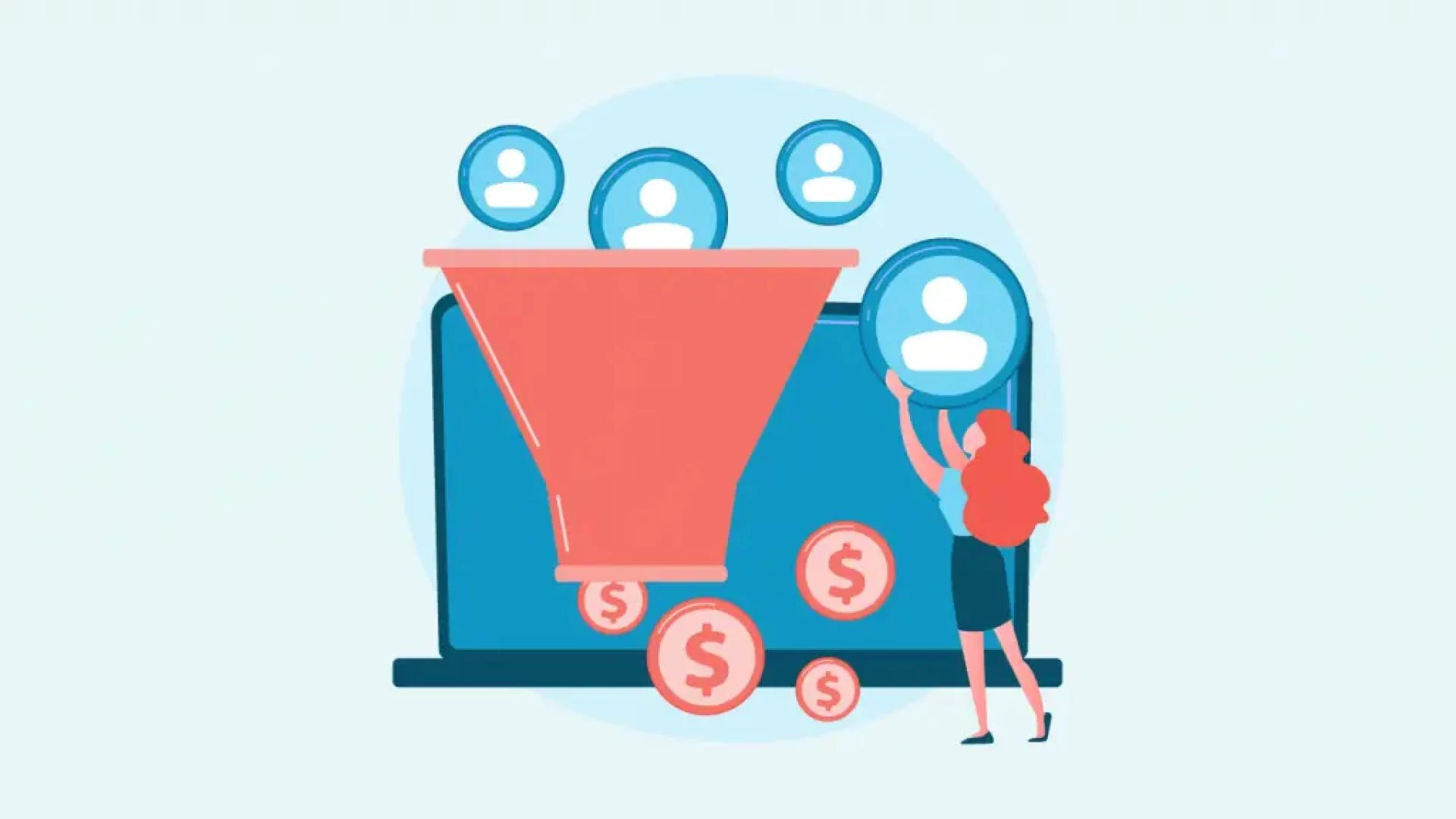
The number of comments and conversations people are starting on your website, what they are saying, and actions they are taking in terms of purchase, email sign ups, add to carts, etc.
Time spent on page
How long people spend on your page, if they read your content or not, what pages do they dwell on more than others.
The number of pages per visit also tells you if they are engaged or not, for example if a visitor stays 5 seconds on a 1000 word article you know they didn’t read it.
With this you can evaluate each page individually to determine the high and low volume pages.
Bounce rate
Considering bounce rate is a metric that search engines look at closely, it is a metric you should be keeping track of.
Per Google, a high bounce rate is an indicator of low quality content.
Bounce rate is believed to be a clear indicator of user experience on your website, this is one metric you should take with the utmost seriousness.
Final Takeaway On What is SEO ( For Beginners As Well As Experts )
Remember there’s no such thing as the perfect SEO tactics.
Whether you are an expert or still getting into SEO basics, no one can truly master the art or science of search engine optimization to perfection.
Only the fact that Google updates its algorithm daily is a clear indicator that you shouldn’t even try. What you should focus on is finding the right keywords for your page.
Creating excellent content around those keywords, and fixing your websites off-page SEO, building quality backlinks, and getting your technical SEO on point.
It seems a lot especially when you are starting out. But the secret here is to prioritize based on your objectives.
If you are a small business, focus on finding geo-focused keywords you can easily rank for without fierce competition.
Take advantage of local SEO where it\'s easier to dominate and then expand from there.
If you’re a large website, focus on technical SEO.
If need be hire someone to do it for you so you get it right.
Remember that the reason for search engine optimization in the first place is to improve the visibility of your website.
Traffic and exposure should always remain the primary objective of every SEO effort.
Rankings and the boost that comes along with it are merely an added bonus for a job well done.
That can only be achieved with time, hard work, and consistency, making SEO a long term game and worthwhile investment.


